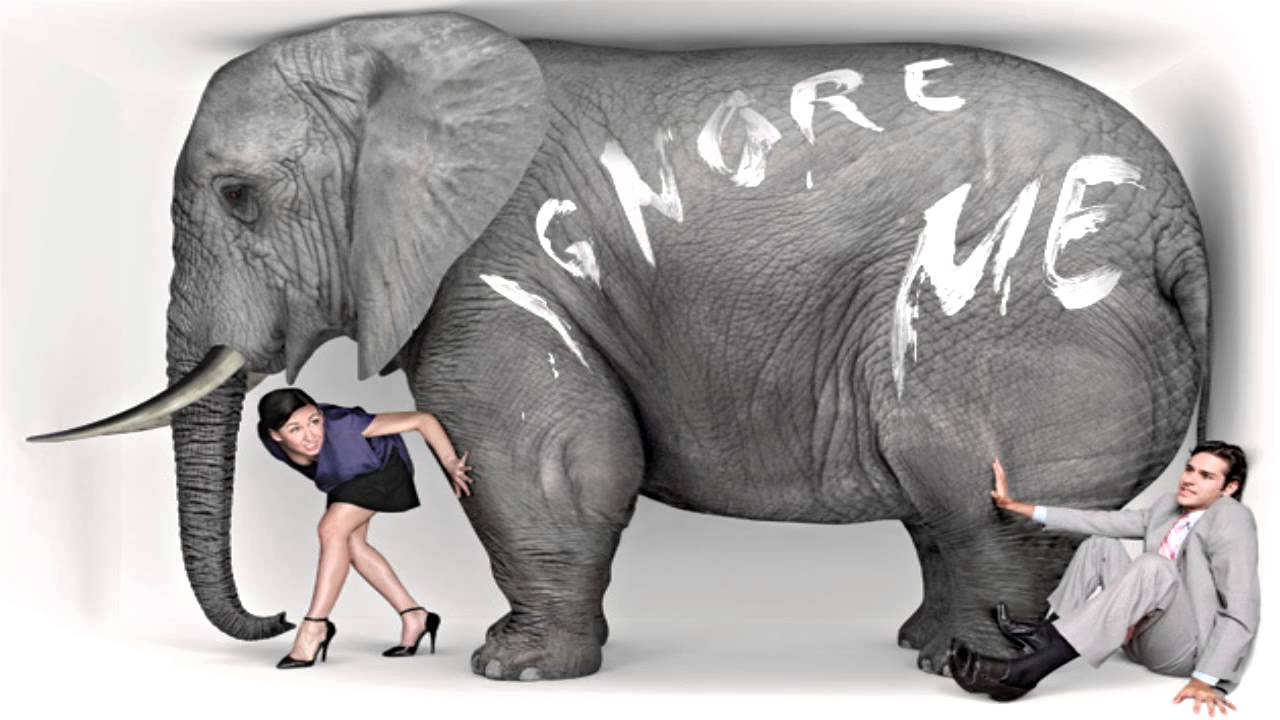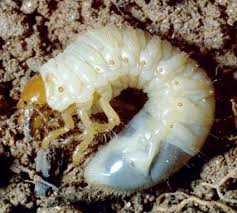The BBC are asking the question “Are insects the future of food?”
They point out that one Derbyshire-based company, Crunchy Critters in Ilkeston, says the price of insects can be reduced by increasing manufacturing.
This opens up the enticing possibility that Big Agriculture could impose the same industrial processes on producing insect protein as they have on producing mammal and bird protein – quite likely with same sort of environmental and social impacts, as well as the additional strain involved in growing extra food to feed these little critters.

So, from the looks of it, the bleedin’ big effalump in the boardroom still isn’t drawing the attention of the movers and shakers in Big Agri.
“Proteins of animal origin like milk, meat, fish, eggs and, probably, insects are very
valuable sources of essential amino acids, minerals and vitamins, but their production consumes some non-renewable resources including arable land and causes considerable emissions.” (1.)
While they are debating which animal crop is most efficient on a given area of land, one has to wonder whether they really are unaware of the fact that a given area of land can produce more than FIFTEEN TIMES the protein from growing edible crops than from growing cows (2., 3., 4., 5., 6.). It’s just so simple – cut out the middle moo!*
But claiming that insect agriculture will provide a viable solution to human hunger, without leading humanity down the same unsustainable route as that which we can already see with mammal and bird agriculture (7., 8., 9., 10., 11., 12., 13., 14.), ….
… well, it all sounds like a case of wanting to ‘have your critter and eat it” at the same time!
Click the mealy grub to see the short BBC video (if you dare…) 
* Apologies to Dr M. Greger for plagiarising his ‘moo’ joke!
- References
- Flachowsky G, Meyer U, Südekum KH. Animals (Basel). 2017 Mar 18;7(3). pii: E25. doi: 10.3390/ani7030025. Land Use for Edible Protein of Animal Origin-A Review. Full text here.
- https://en.wikipedia.org/wiki/Edible_protein_per_unit_area_of_land
- http://www.cornandsoybeandigest.com/blog/usda-projects-record-corn-and-soybean-crop-2016
- https://www.unc.edu/~rowlett/units/scales/bushels.html
- http://lib.dr.iastate.edu/cgi/viewcontent.cgi?article=1722&context=ans_air
- http://nutritiondata.self.com/facts/beef-products/7493/2
- http://science.time.com/2013/12/16/the-triple-whopper-environmental-impact-of-global-meat-production/
- http://www.fao.org/docrep/010/a0701e/a0701e00.HTM
- https://gelr.org/2015/10/23/a-leading-cause-of-everything-one-industry-that-is-destroying-our-planet-and-our-ability-to-thrive-on-it-georgetown-environmental-law-review/
- https://www.scientificamerican.com/article/how-bad-of-a-greenhouse-gas-is-methane/
- https://www.eia.gov/environment/emissions/ghg_report/ghg_nitrous.php
- https://www.ers.usda.gov/topics/farm-practices-management/irrigation-water-use/background.aspx
- http://www.fao.org/docrep/010/a0701e/a0701e00.htm
- http://www.takeextinctionoffyourplate.com/meat_and_wildlife.html
- https://nepis.epa.gov/Exe/ZyNET.exe/901V0100.txt?ZyActionD=ZyDocument&Client=EPA&Index=2000%20Thru%202005&Docs=&Query=&Time=&EndTime=&SearchMethod=1&TocRestrict=n&Toc=&TocEntry=&QField=&QFieldYear=&QFieldMonth=&QFieldDay=&UseQField=&IntQFieldOp=0&ExtQFieldOp=0&XmlQuery=&File=D:%5CZYFILES%5CINDEX%20DATA%5C00THRU05%5CTXT%5C00000011%5C901V0100.txt&User=ANONYMOUS&Password=anonymous&SortMethod=h%7C-&MaximumDocuments=1&FuzzyDegree=0&ImageQuality=r75g8/r75g8/x150y150g16/i425&Display=hpfr&DefSeekPage=x&SearchBack=ZyActionL&Back=ZyActionS&BackDesc=Results%20page&MaximumPages=1&ZyEntry=2